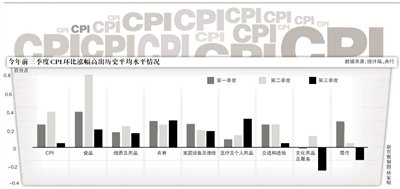India Proposes The First Manufacturing Policy To Enhance Growth Rate
India has formulated the first national manufacturing policy.
accelerate
The next 10 years
Investment
And growth.
The federal cabinet (10) has passed the policy in the hope of upgrading manufacturing in 2022, accounting for 25% of the country's output.
At the same time, I hope to create 100 million.
Obtain employment
Opportunities to enhance global competitiveness and sustainable growth.
The government of India indicated that the core of the policy included the establishment of National Investment and Manufacturing Zones (NIMZs), large industrial parks, or "industrial towns" that conform to the labor and investment regulations.
But the policy also hopes to improve India's industrial infrastructure, simplify business norms, develop new green technologies, and enhance the skills of new generation of manpower.
As for individual units or regions, no subsidy is provided because industrial parks will be built by private sector.
But there are also some financial incentives, including the purchase of plant buildings in the park and the purchase of machines which are exempt from capital gains tax.
B Muthuraman, President of Confederation of Indian Industry (CII), said that simplifying administrative procedures and having world-class infrastructure facilities will greatly encourage the manufacturing sector to increase investment in India.
India is a young country with a working age of over 60%. It is estimated that the new labour force will be increased by 220 million in the next 10 years. The manufacturing industry is the key industry that can provide at least 50% jobs for the new labour force.
At present, about 16% of India's gross domestic product is contributed by the manufacturing sector, which has also led to its domestic worries about the rapid growth of other Asian countries.
The textile and clothing industry in India accounts for 4% of GDP, 14% of industrial production and 12% of foreign exchange earnings. It is the second largest employment market after agriculture, with 33 million direct workers and 55 million non direct workers. 7 million of them are related to garment manufacturing and half of them are engaged in export.
- Related reading
WTO Anti Dumping Committee Annual Report Shows Reduction Of Anti-Dumping Cases
|- Fashion character | Vivian Wu, A Lifelong Shanghai Woman
- Fashion character | Di Ali Gerba Confessed That She Was Not Wearing A Cheongsam, But It Was More Feminine After Wearing It.
- Street shooting popular | Zhong Chuxi Italy Travel Photo, With The Head Of The Explosion With Cowboy Hot Pants, Scenery Beauty Sash Really Seize The Opportunity.
- Street shooting popular | The Two Collocation Of Durosi's Latest Street Is Like A Maiden, But Shoes Are Accidentally Fired.
- Popular color | Knitted Blouse Matches Half Skirt, So It Is Very Thin.
- Fashion blog | The Two Generation Of Chen Feiyu, Dressed In A Gray Suit, Turned Himself Into A Bossy President.
- Popular this season | Belong To The Fashion Of Autumn Wear, Age Reduction Temperament, Both Hands, According To Wear Change Temperament Soft Sister.
- Fashion makeup | Who Says Boys Can't Be Colourful? Learn To Use Flower Shirt To Make You A Super A Teenager!
- Fashion character | Wang Ziwen Manages The Modern Country Wind Blockbuster, Wearing The "Chivalrous Feeling" Of The East.
- Visual gluttonous | Fu Jingchuan's Little Black Dress Changes Legs To A New Height.
- Textile Machinery Manufacturing Industry In China Should Be Popularized And Digitalized.
- Domestic CPI Growth Declines While Clothing Price Index Keeps Rising.
- Flaunting Wealth Has Created The World'S First Place In China'S Luxury Consumption.
- The King Of The Future Garment Industry Must Have The Dual Genes Of Tradition And Electricity Supplier.
- Jintan, Jiangsu: Export Bonus Of A Small Clothing Town
- The Regulations On The Protection Of Special Labor For Female Workers Are Proposed To Extend Maternity Leave To 14 Weeks.
- 2011 China (Xiqiao) Popular Fabric Trade Fair Has Gained A Lot.
- 14 Rare Bally Shoe Antique Posters
- Halfway Husband And Wife Can'T Reach The Chaff Couple NBA Boy Kris&Nbsp; Humphries Is Kicked Out By His Wife.
- The Eleventh Australian China Textile And Apparel Show Opens
